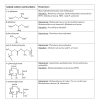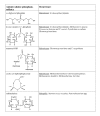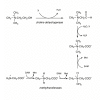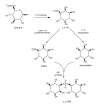Organic compatible solutes of halotolerant and halophilic microorganisms
- PMID: 16176595
- PMCID: PMC1224877
- DOI: 10.1186/1746-1448-1-5
Organic compatible solutes of halotolerant and halophilic microorganisms
Abstract
Microorganisms that adapt to moderate and high salt environments use a variety of solutes, organic and inorganic, to counter external osmotic pressure. The organic solutes can be zwitterionic, noncharged, or anionic (along with an inorganic cation such as K(+)). The range of solutes, their diverse biosynthetic pathways, and physical properties of the solutes that effect molecular stability are reviewed.
Figures











References
LinkOut - more resources
Full Text Sources
Other Literature Sources
Molecular Biology Databases

